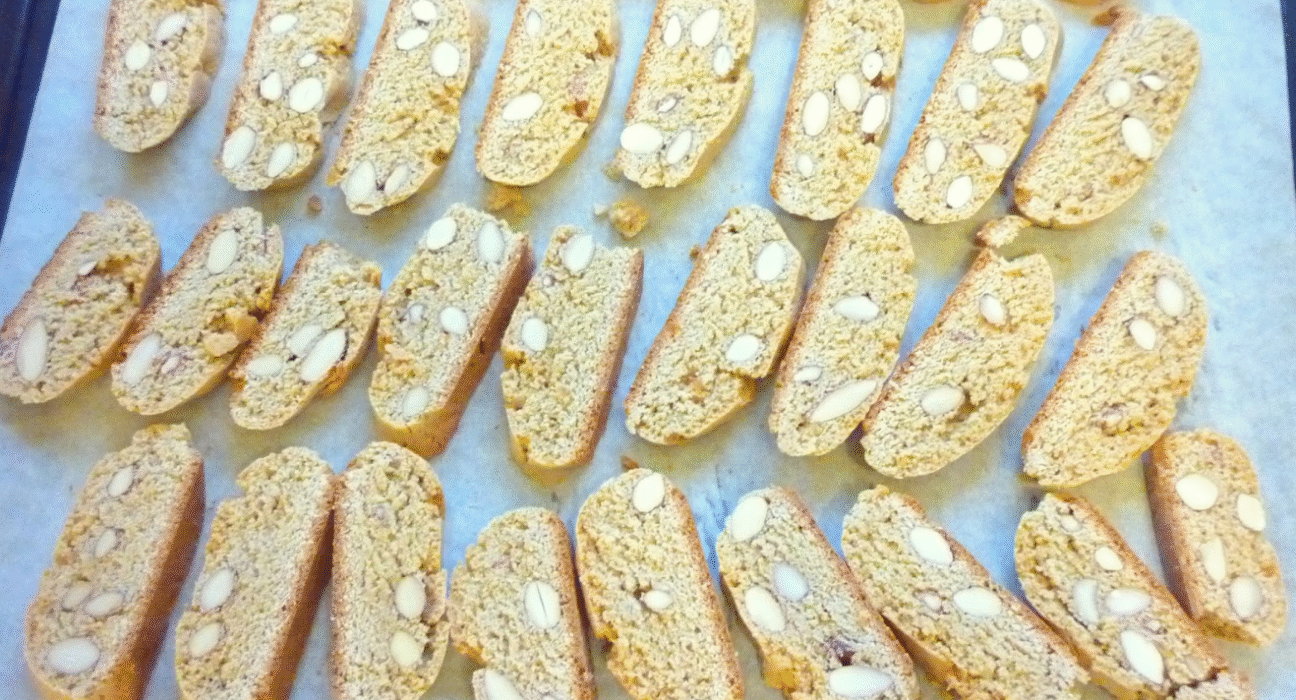What is бишкоти ди прато?
If you ever dunked a hard cookie in espresso or sweet wine in an Italian café, you probably ate бишкоти ди прато — also just called biscotti. But here’s the thing: бишкоти ди прато is not just any cookie. It’s old-school Tuscany in one bite. It’s named after Prato, a city in Tuscany, where it all started. Twice-baked, loaded with almonds, stays crunchy forever — that’s the deal.
Lots of people think “biscotti” means any crunchy cookie. In Italy, it’s this one. The name “бишкоти ди прато” is just how it sounds, written in other languages — same cookie, same crunch.
This quick guide breaks down its origins, the manufacturing process, why Italians still love it, and how people have adapted it today. If you like cookies, coffee, and old recipes, you’ll get it.
Where it started — old Tuscan food trick
Go way back, medieval Italy. Soldiers and travelers needed food that didn’t spoil. Solution? Bake it twice. Dry it out. Hard as a rock, lasts forever, perfect for dipping.
That’s how biscotti started in Prato in the 14th century. The big name tied to it is Antonio Mattei — he wrote down the classic recipe in the 1800s: flour, sugar, eggs, pine nuts, almonds. No butter. No oil. Basic, and it works. His recipe is still the blueprint today.
Why twice-baked matters
“Biscotti” literally means “twice-baked.” First bake: Shape the dough into a log and bake it until it’s firm. Let it cool, slice it up. Second bake: dry out each slice till golden and crisp.
That’s the trick — no fat, no soft center. Just dry, crunchy, made to dunk in coffee or vin santo (that’s a sweet Italian wine). Modern recipes sometimes add butter, oil, and baking powder, but real бишкоти ди прато keeps it simple. Almonds do all the talking.
More than a cookie for Italians
In Tuscany, бишкоти ди прато is more than just a snack. It’s tradition. You eat it after meals, dip it in Vin Santo, and enjoy the softening and the almond hit. Some places have it as a protected food — part of local heritage. Bakeries in Prato still guard old recipes like family treasure. Old families pass it down — no shortcuts.
How it went worldwide
Bishkoti left Prato and took over coffee shops. In English, everyone just says biscotti. Big boom in the 90s with the café trend — Starbucks, fancy coffee, crunchy cookie on the side.
However, outside Italy, it has changed significantly. Supermarket versions: too soft, too sweet, full of chocolate chips or icing. Tasty? Sure. Original? Nope. True бишкоти ди прато is simple, dry, almond-heavy. Nothing else.
New twists — good or bad?
Some people stick to classic almonds. Others swap in pistachios or hazelnuts. Or add citrus zest, cinnamon, and anise. Some dip the ends in chocolate. Some are vegan or gluten-free. The double bake stays the same. Crunch stays the same.
Make it at home — super easy.
No fancy gear. You need flour, eggs, sugar, almonds, and an oven. Done. Here’s how:
You need:
- 2 cups flour
- 3/4 cup sugar
- 2 eggs
- 1 tsp vanilla
- 1 cup whole almonds (toast them first)
- Pinch of salt
How to do it:
- Oven at 350°F (175°C).
- Beat eggs, sugar, and vanilla.
- Mix in flour and salt. Dough will be sticky.
- Add almonds. Shape into a log.
- Bake 25–30 mins. Let it cool a bit. Slice diagonally.
- Bake slices again for 10–15 minutes, flipping once.
That’s it — real бишкоти ди прато. Stays crunchy for weeks. Dunk it. Gift it. Eat it all yourself.
Not just for holidays, but always around
It’s not only for Christmas or Easter, but you’ll see it on tables for big family meals, weddings, and Sunday lunches. Classic grandma treat. Many Italian families bake it together and pass down their recipes. It shows up in cookbooks, food shows, and fancy hampers.
Final word — why it still matters
In a world of overloaded desserts, бишкоти ди прато stays simple. Few ingredients, twice-baked, tough enough to last. It’s more than a cookie — it’s old-school Italian craft in a bite. Next time you see biscotti in a café, remember it’s not just a cookie — it’s Tuscan history, made to be dunked, loved, and shared.






